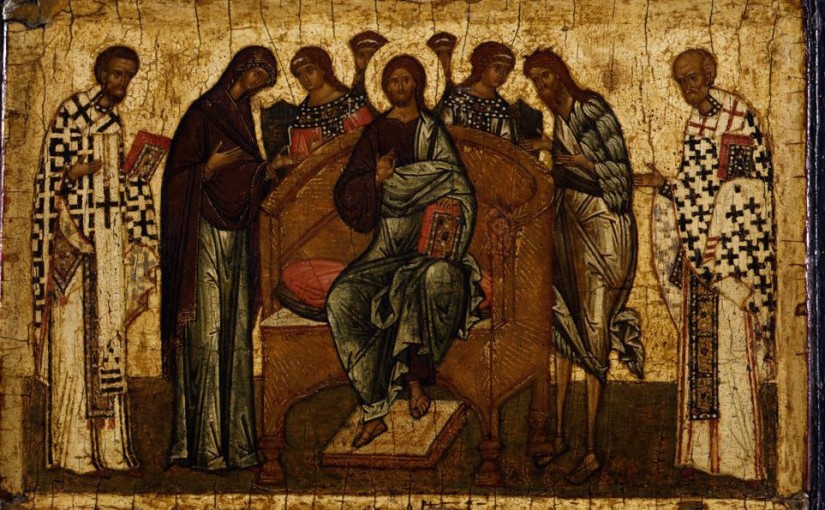Among the first items chosen for the MOL library was this Russian Deesis plaque, made by an unknown artist between 1460 and 1470. The plaque was carefully made from a board (doska) of high-quality pine or fir, covered with white plaster (levkas), illustrated with tempera paint, and sealed with an oil-based varnish (olifa) before a layer of metallic facing (oklad) was added to increase the object’s brilliant appearance.
The term Deesis (from the Greek verb deomai, “to plead”) refers to a type of icon featuring the figure of Christ flanked by saintly intercessors—often (as here) Mary and John the Baptist—and often accompanied by angels. In medieval Russian homes, such icons were housed in the “red corner,” the nicest part of the house. There, members of the family would kneel before the icon and offer petitions as well as prayers of thanksgiving, prayers directed not to the icon itself but to the holy figures depicted on it, to whose presence the icon was believed to offer special access.
We have no direct evidence about the original home of this Deesis icon, or its early movements. By the first half of the twentieth century it had made its way to Turkey, where it was acquired by the scholar Thomas Whittemore, founder of the Byzantine Institute of America and Keeper of Byzantine seals and coins at Harvard’s Fogg Museum. For a number of decades, it was part of a large collection of Russian icons held by Juniata College in Huntington, Pennsylvania, before moving to the Fogg Musuem in 1992. Currently, it is in storage at the Harvard Art Museums‘ Somerville Research Center.
—Sama Mammadova, Assistant Project Manager
